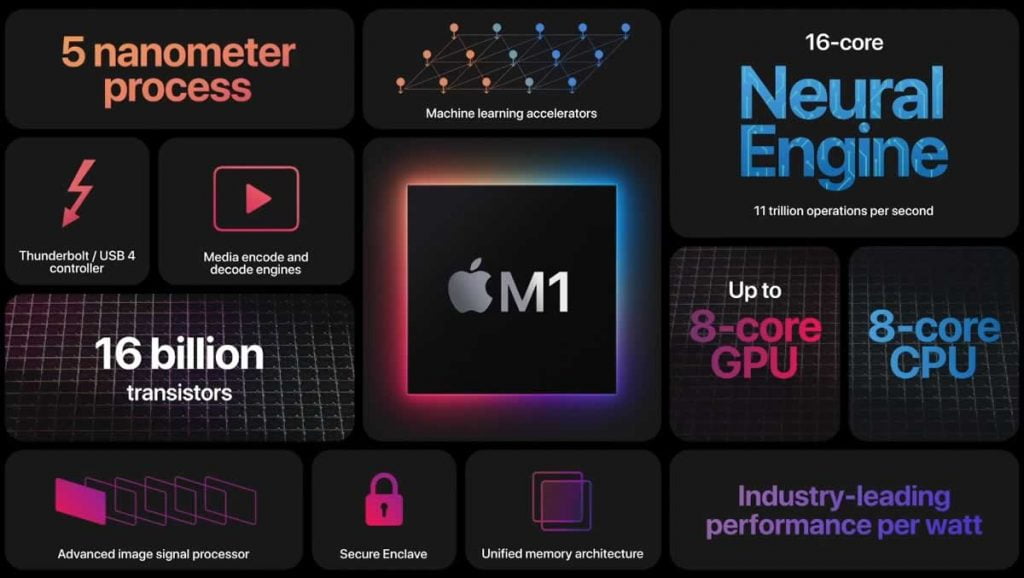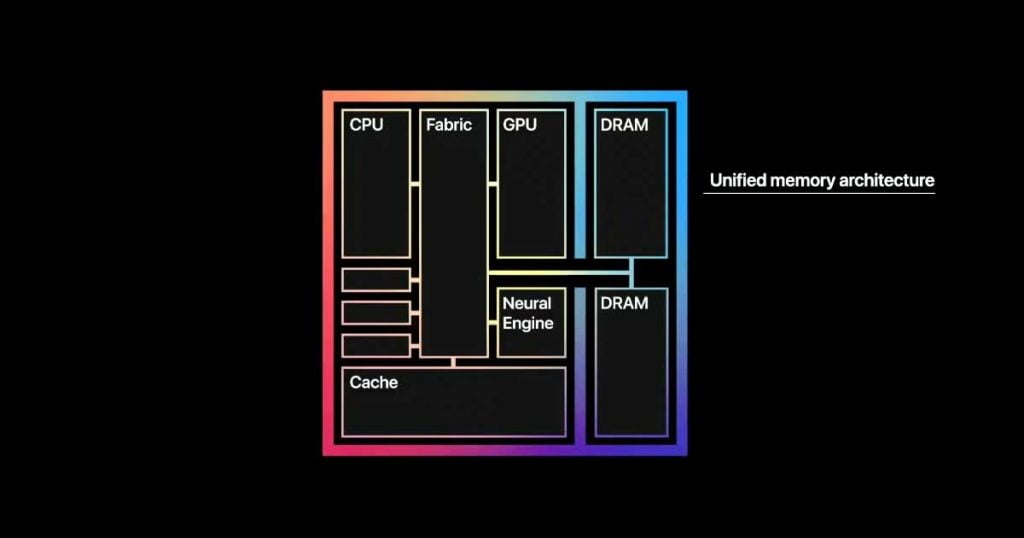Apple M1 — the first processor of the Apple Silicon family, has arrived. The Apple M1 SoC is the first step of the company in its total transition towards ARM architecture. M1 will replace Intel’s x86 architecture with ARM’s in its Mac computers.
With the launch of M1, Apple raises the balance between consumption and performance to new benchmarks. Apple has built this processor based on the experience accumulated over the years with the design and development of SoCs for iPhone and iPad.
M1 developed with a 5-nanometer production process, which allows to condense up to 16 billion transistors on the chip. The SoC is composed of an 8-core CPU divided into two blocks of 4-core — a high-performance one for the most demanding tasks and a high-efficiency one to reduce energy consumption and balance performance and autonomy. The four high-performance cores will use an “ultra-wide” execution architecture with a total of 12 MB of shared L2 cache, 192 KB of instruction cache, and 128 KB of the data cache. Apple does not indicate the operating frequencies of its SoC.

The GPU has also been designed by Apple. It has 8 graphics cores and 128 execution units, capable of reaching power of 2.6 TFLOPs. However, we will have to wait for the independent performance tests to assess its performance against Intel’s integrated ones.
In general, M1 is capable, both on the CPU side and on the GPU side, with consumption of 10W to deliver double the performance, while the peak performance allows it to consume a quarter of energy less.
With the Apple M1 SoC, the American company has dispelled all the doubts we had so far. Not only is it a very powerful chip, but it also has a high degree of specialization and significantly simplifies the traditional design that Mac computers have adopted.
The SoC also features a unified memory architecture. Apple M1 SoC simplifies the chip design in an incredible way by integrating all necessary elements needed to give life to a Mac in a single package. It includes a Neural Processing Unit with 16 cores, the memory controller; the cache; the controller for the Thunderbolt 4 connection, or the Secure Enclave, a chip dedicated to data security tasks.

Much of this is made possible thanks to the deep integration between the M1 chip and the new macOS Big Sur operating system, which has been specifically optimized to make the most of the new processor. This allows, at least according to Apple’s statements, to have an extremely reactive system, which immediately recovers from sleep and is able to always maintain the most adequate balance between consumption and performance thanks to the synergistic work of SoC and operating system.
Apple M1 will be able to motorize Apple’s lightweight notebooks or Mac mini, but not more advanced equipment such as Mac Pro or iMac. Especially on the GPU part, an integrated one that will not be able to compete in any case with the dedicated ones from NVIDIA or AMD.
Apple has announced the first personal computers under Apple silicon. As we expected, it is about the renewal of the three lower performance models — the MacBook Air and MacBook Pro 13 notebooks and the Mac mini mini-PC.


